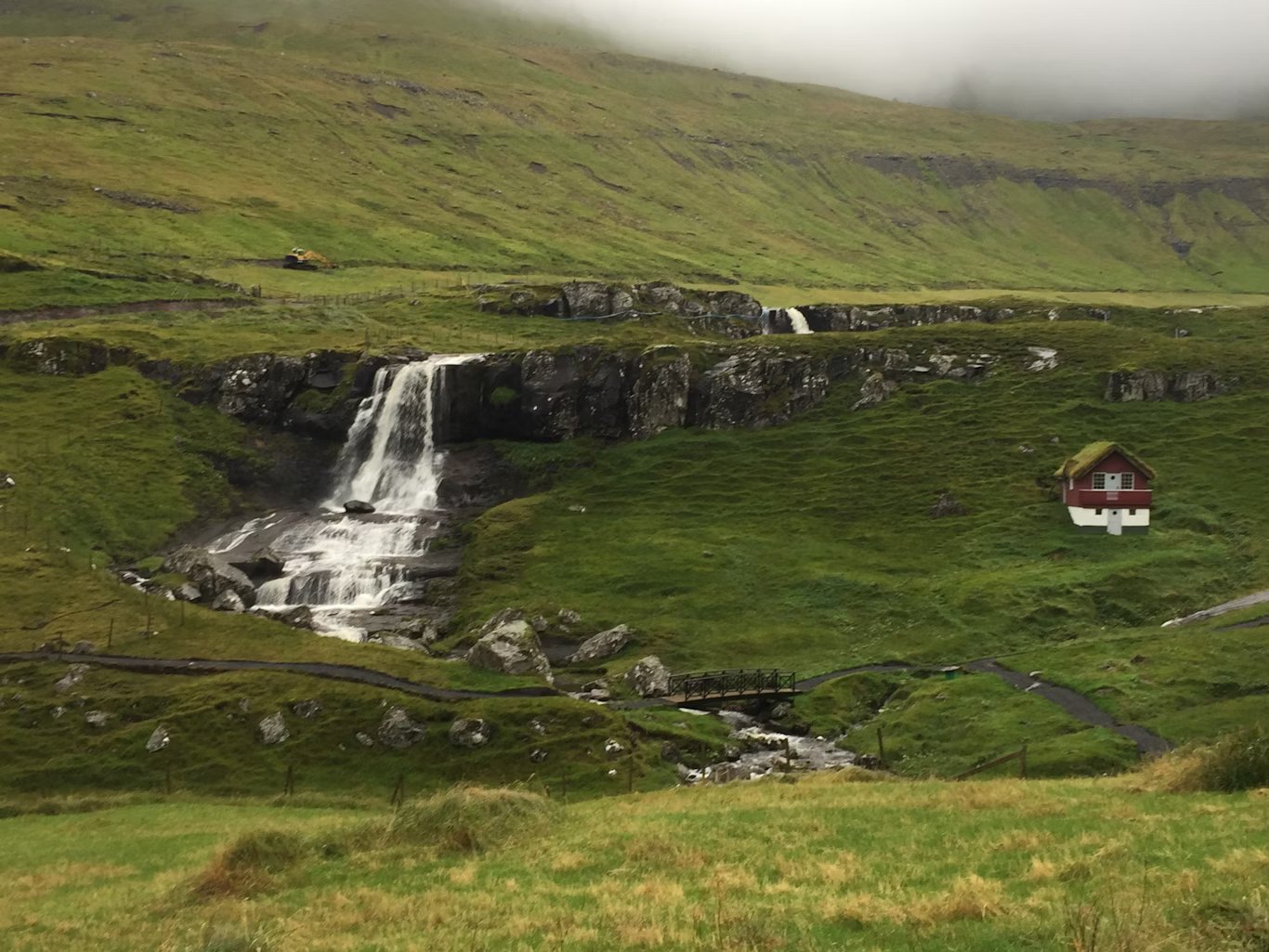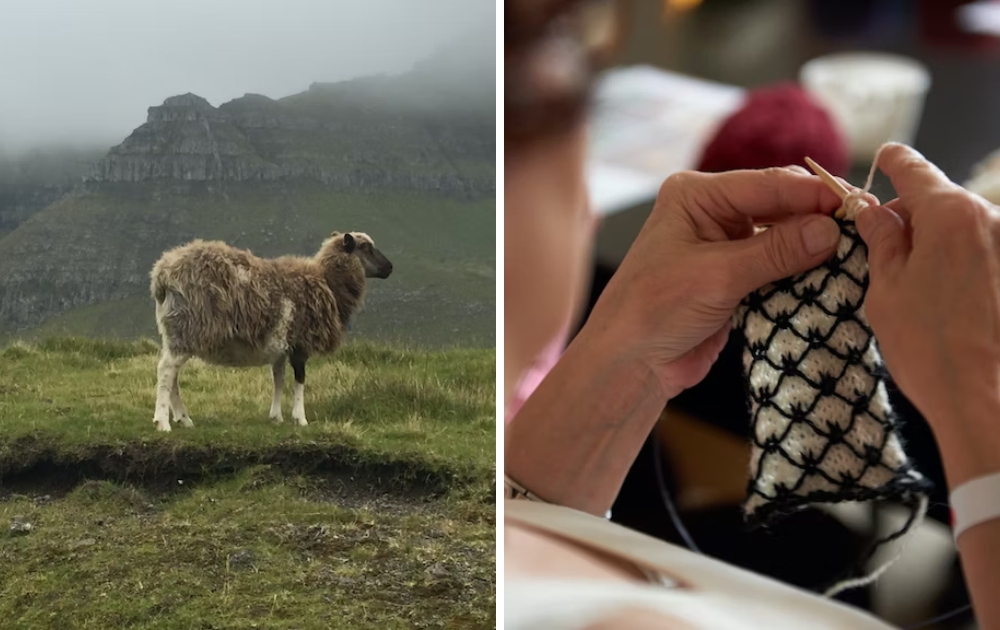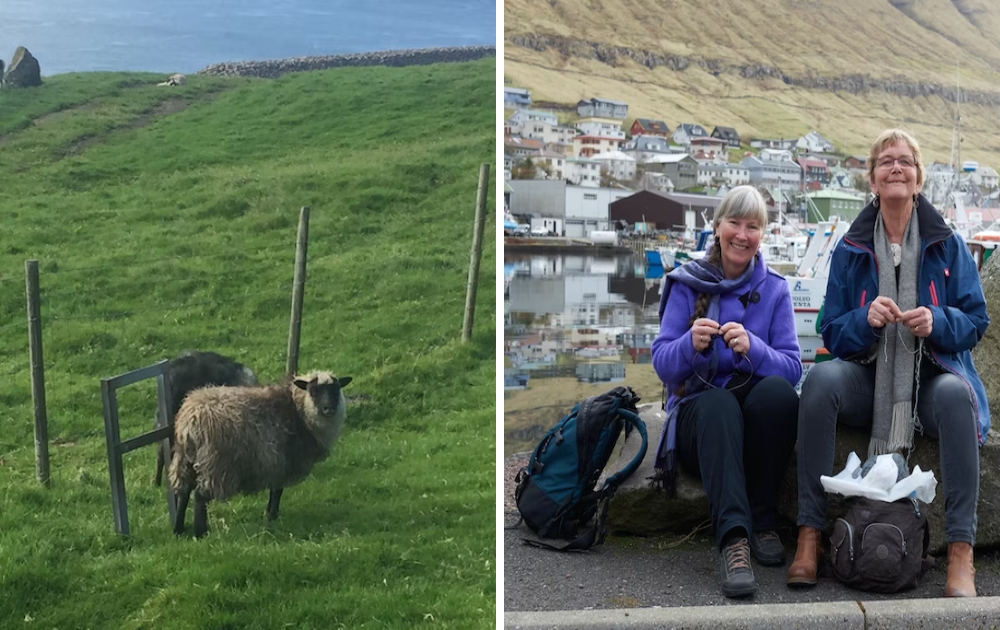First up, what is Faroese knitting?
Think Sarah Lund’s knitwear and you’re on the right lines.
The Faroe Islands’ knitting is some of the best in the world, often done by women at home, using traditions and Faroese knitting patterns handed down from generation to generation.
The wool comes from some of the 80,000 sheep that roam the islands.

Why is the Faroe Islands’ wool so special?
Faroese wool contains more lanolin (wax or grease from the sheep) than lambswool.
These sheep are hardy, living on rain-soaked mountain sides for months on end and it’s the lanolin that makes it waterproof.
Basically, it keeps the water out and the heat in.
Older Faroese men would not be caught dead wearing anything other than a Faroese sweater in the rain or even out at sea.
How long does it take to make a Faroese sweater?
Experienced knitter, Gudny Vang, reckons it take her two weeks of knitting every day to make a sweater.
While some women might be able to knit the complex patterns they might not be able to piece it all together, but locally there’s usually someone with the missing skills.

Where do the Faroese patterns originate from?
“Every woman worth her salt has a copy of this book,” Vang says, waving a copy of Føroysk Bindingarmynstur, the definitive Faroese pattern book.
Noticing that different islands, towns and villages all had their own patterns, two men collected them all together during the 1920s and 30s before they could disappear from older people’s memories.
There are 143 patterns (including some for men’s woolly undies). Now keen knitters adapt traditional patterns to modern palettes by using jazzy colours or by refining the series of stitches.
Who knits in the Faroe Islands?
Most women across the islands’ small towns and villages knit or belong to a knitting group. A social event, the weekly or monthly groups meet during the winter months for a good old gossip and to click the needles.
“I don’t actually knit that much when we meet up, I’m too busy chatting,” says Vang.
And it’s not just the women. Some men have taken up the wool.
While there’s not lots of them, they actually are part of an older tradition when men were big knitters.

Why is Faroese knitwear so sought after?
Faroese sweaters are not just things of beauty they’re long lasting as well.
Favourite sweaters have been known to be passed down through three or more generations, they’re a lifelong (and longer) sustainable investment.
Plus, if you can get your hands on a Faroese sweater, it’s pretty much guaranteed to be unique.
Where can I buy a Faroese sweater?
If you’re lucky enough to visit the Faroes, then there are several shops in the capital Tórshavn or each town has a shop where keen knitters sell the unique sweaters they’ve made.
Islanders never buy these jumpers from stores, they’re always made to order by family or friends.
If you don’t plan on visiting the Faroe Islands, try Gudrun & Gudrun (who made Sarah Lund’s now infamous knit) for a modern take on Faroese knitting or Navia for solid colours and hearty sweaters.
Want to learn more?
There’s a famous Faroese knitting festival in Fuglafjørður every April if you’re really keen to nail the needles.










